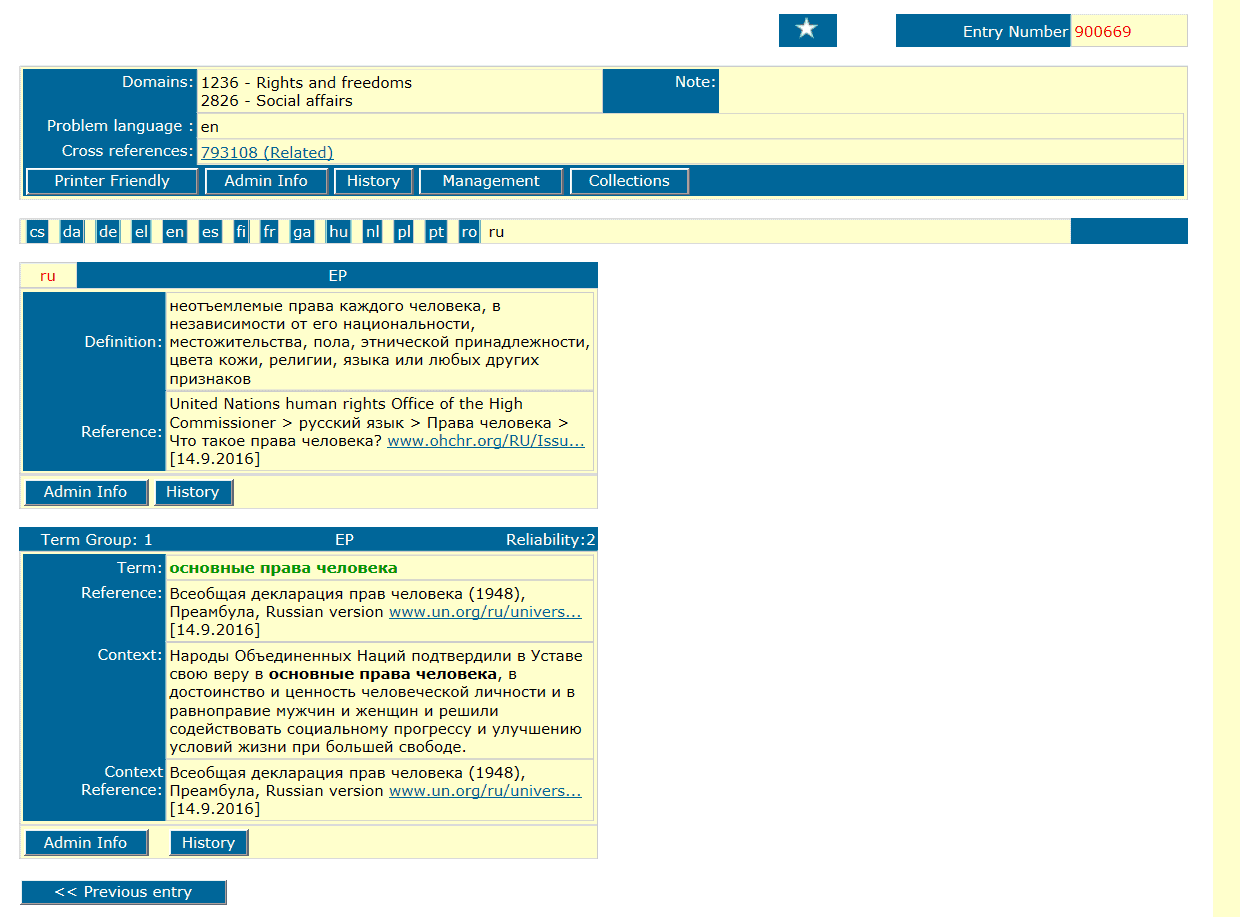 My 3-week study visit at the Terminology Coordination Unit of the European Parliament is almost over. Time seems to have flown… So, what have I been doing and what have I learned?
My 3-week study visit at the Terminology Coordination Unit of the European Parliament is almost over. Time seems to have flown… So, what have I been doing and what have I learned?
First of all, it’s been a great opportunity for me as a mature student and a life-long linguist to learn new skills in the field of terminology research and to contribute to the IATE database which contains almost 9 million terms across a great variety of domains in the official EU languages and even some non-EU languages. IATE is consulted not only by translators at the EU institutions, but also by journalists, lawyers and other users all over the world.
Being bilingual in Russian and English, I was given, among other assignments, the task of compiling Russian-language entries for the existing English terms in the domain of human rights, which meant extensive browsing in both languages – very informative factually, conceptually and linguistically!
The IATE database has an internal and a public version. The internal version, accessible only with a password, is interactive and can be updated by the translators of all EU institutions. Non-EU languages are available only in the internal version, because IATE public contains only terms that can be validated by EU terminologists.
It is essential to maintain the quality standards and the uniformity of referencing, therefore all study visitors and trainees have to receive initial IATE training, and their input is subsequently validated by professional terminologists. The supervising terminologist, or a more experienced trainee, provides the necessary guidelines and templates for the terms that need researching. To give just a few examples, my source language (English) list included such broad entries as ‘democratic governance’ or ‘fundamental human rights’, more specific concepts like ‘prisoner of conscience’ or ‘diplomatic asylum’, and names of organisations, for instance, ‘World Organisation Against Torture’ or ‘Committee on Enforced Disappearances’. My job was to find Russian equivalents substantiated by definitions and contexts from reliable sources.
The first step is to check the English entry (and, where possible, entries in other languages which might provide translation clues and research directions), and then search target language (Russian) websites for equivalents. The IATE template requires the researcher to fill in a definition, a translation and a context, all properly referenced. While a definition coming from Wikipedia might be acceptable in the absence of a more formal one, it is often very difficult to find good definitions, and the terminologist has to combine elements from several sources. For the term reference as well as the context, i.e. the validation of the target language equivalent, more reliable sources have to be found. This may also prove to be challenging and time-consuming, since Russian is not one of the EU languages, and databases like EUR-Lex do not contain documents in this language. However, with Russian being one of the 6 official languages of the UN, I ended up doing a lot of research on the Russian webpages of the United Nations (http://www.un.org/ru/) and Amnesty International (https://amnesty.org.ru/), as well as searching for academic books and articles, or using Russian legislation databases such as http://www.consultant.ru/ and http://www.garant.ru/. Whenever this didn’t yield enough results, I referred to media publications. As my terms ranged from ‘the right to remain silent’ to ‘LGBTI’, the browsing history on my work computer has at times been somewhat unorthodox!
After completing the template and receiving feedback from the terminologists, I was ready for the final stage of entering the data into IATE – a quick and straightforward procedure compared to the actual research. It’s quite rewarding to see the new entry looking something like this:

And finally, a practical tip for anyone doing a similar job in Russian at TermCoord: how to circumvent the fact there is no Russian keyboard. Since the computer group policy restricts the choice of keyboards to EU languages, it has not been possible to install the standard Russian Cyrillic, which, of course, slows down research if typing can only be done through copy-paste, ‘translit’ sites or inserting symbols. One way round is to use the Bulgarian keyboard, but it does not have the same layout as Russian and is therefore not practical for touch typing. I can recommend using a virtual keyboard like http://www.apronus.com/internet/ruskey.htm, which enables you to actually type in Russian on any keyboard, rather than click on the Cyrillic letters on the screen. Of course, you will still need to copy-paste the resulting text, but it does speed things up.
There is still an endless stream of entries to update, so good luck, and hope you enjoy it as much as I have! TermCoord will be happy to host more Russian-speaking study visitors to enrich the repository of Russian entries.

Yelena Radley
TermCoord Study Visitor
Master in Learning and Communication
in Multilingual and Multicultural Contexts
University of Luxembourg
You can also access sample Russian terminology templates.
